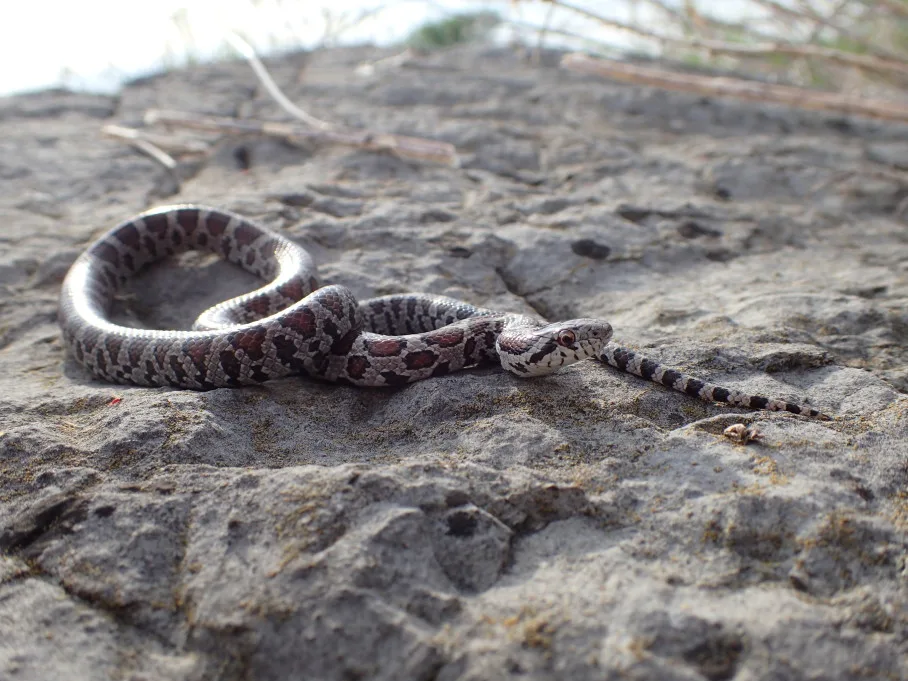
How cold-blooded creatures prepare and settle in for winter
There is no general rule of thumb on exactly when reptiles become nestled in their wintering spots, and will vary based on weather conditions. However, a University of Guelph expert said 'once we get a freeze then things are pretty well done'
It isn't just warm-blooded organisms that need to shelter during the winter months, reptiles also take necessary steps in an effort to survive the cold months.
Reptiles are cold-blooded or ectothermic, which means they rely on external sources for heat as they are unable to generate their own body heat.
Visit our Complete Guide to Fall 2022 for an in-depth look at the Fall Forecast, tips to plan for it, and much more!
But reptiles are not "true hibernators," according to Ontario Nature. What they do instead is experience brumation. In other words, they don't stay completely dormant through the entire winter. Their metabolism and heart rate slow, but they are still mostly conscious, and active, even. Eastern garter snakes will occasionally leave their hibernaculum to lounge on the snow, while turtles have been spotted swimming under the ice.
So, how reptiles get ready for and what they actually do during Canada's cold months isn't a one-size-fits-all approach, and will vary from species to species, according to Jim Bogart, a University of Guelph professor emeritus, who spoke to The Weather Network in 2021.
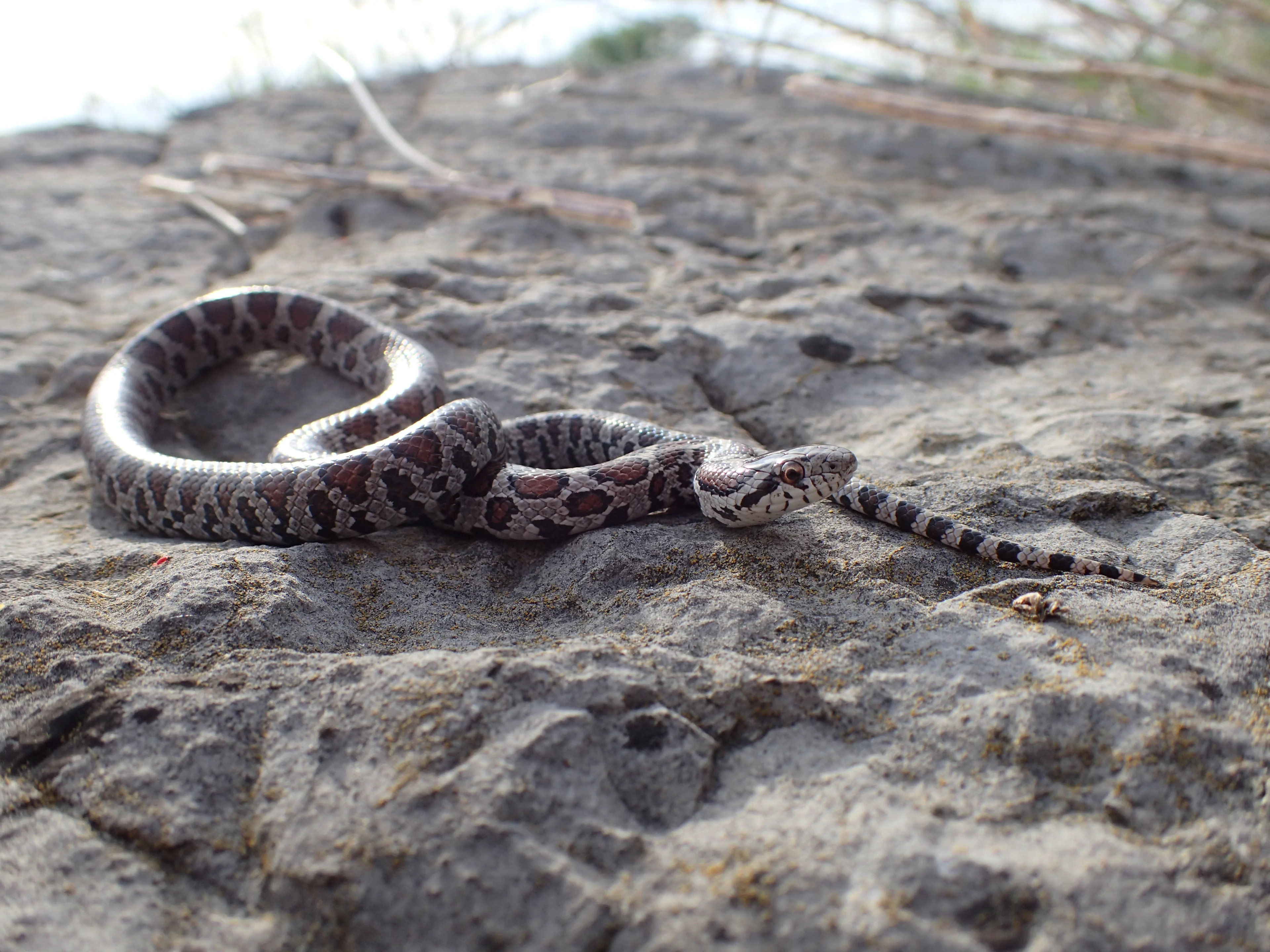
Eastern milk snake. (Heather Fotherby)
"It's quite variable. Like some of the turtles [will] stay out until the freeze-up more or less in the water, if they're going to stay in the water. Then the snakes have to find the hibernaculum, and they usually go in at about this time of year," said Bogart. "Some of the species congregate and some species find a place by themselves."
When a freeze occurs dictates when reptiles will find hibernaculum
There is no general rule of thumb on exactly when reptiles become nestled in their wintering spots, and will vary based on weather conditions. But Bogart did say "once we get a freeze then things are pretty well done."
SEE ALSO: All modern snakes evolved from a few survivors of Cretaceous mass extinction
In terms of preparation, some salamanders will scour the forest floor at night in the fall after rainfall to feed, ensuring they have enough reserves to last through the winter, Bogart said, but their metabolism slows "right down" and they don't need much to survive.
"It's not like a bear where they have to maintain some kind of body heat. Some of the frogs are freeze-tolerant, too, so they actually have a condition where they can prohibit ice from forming in their cells," said Bogart.
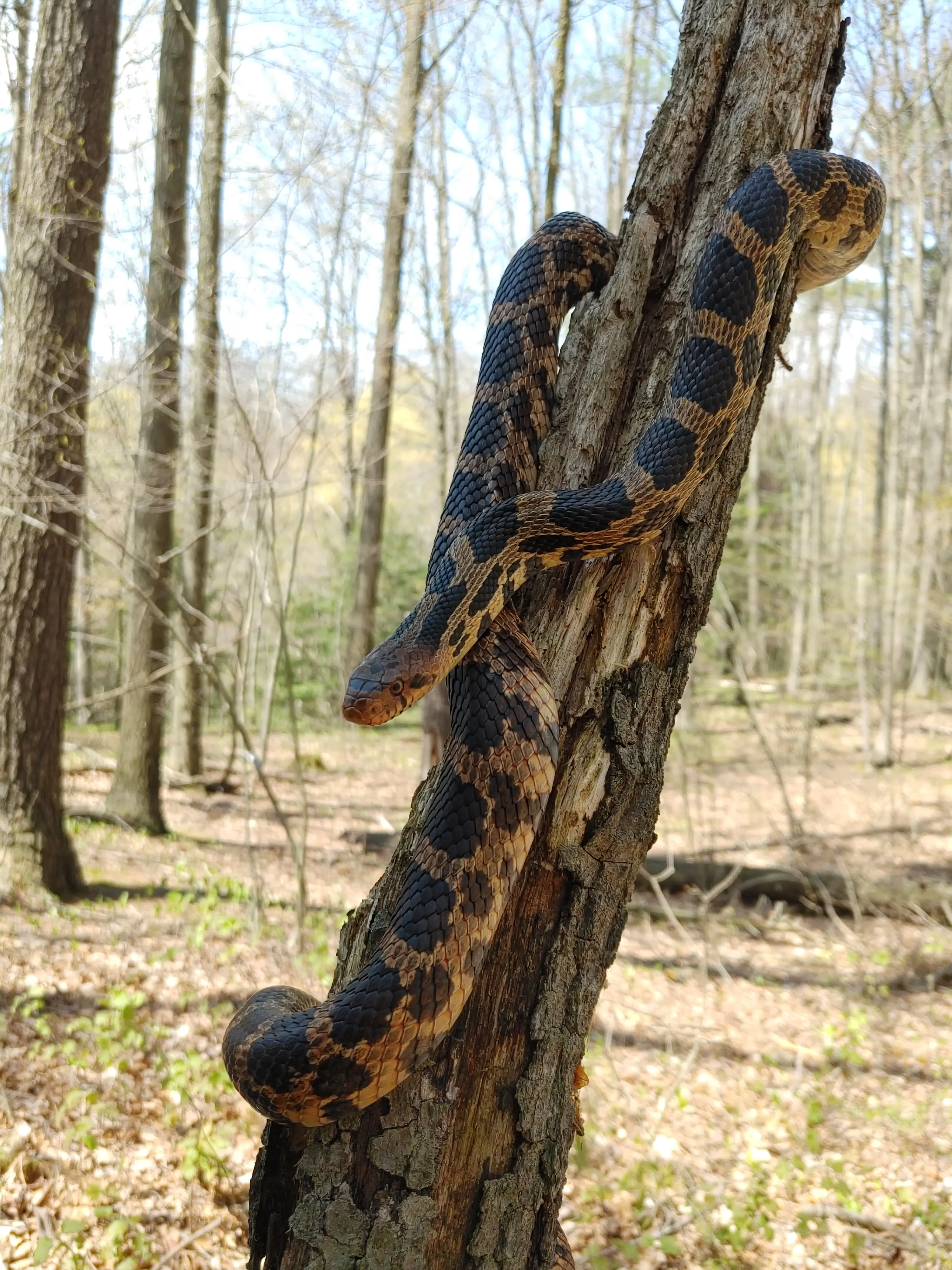
Eastern fox snake. (Heather Fotherby)
Although they don't remain totally dormant, reptiles will freeze to death if they don't find warm shelter for the winter months, Bogart said.
"So they have to find a place where they don't freeze. The farther south [they live], they come out in the warmer days and they seek shelter in the cooler days. But up here, once it freezes, they pretty well have to be in a place where they don't freeze," said Bogart.
Snakes will typically have found shelter by the end of September, he said, but will reappear on warmer days during the fall and then retreat during the colder days before finally disappearing for the winter.
"And in the spring, it's the same sort of thing. They come up on the warm days and [then] they go back down. It takes them a while to finally disperse into the habitat," said Bogart.
When they seek shelter underground, they don't have to take refuge that deep, he noted, and can find warmth as long as they stay below the frost line. In some cases that could be as little as six inches under the ground.
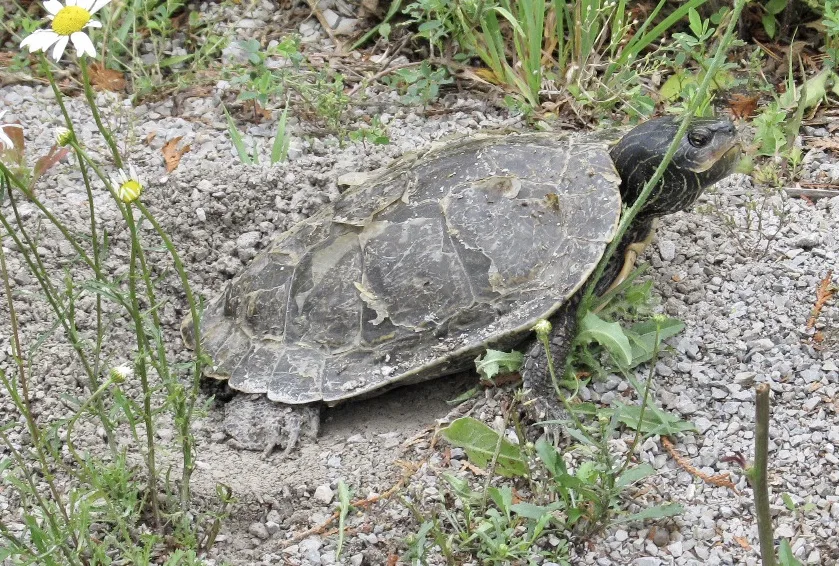
(Warren Howes).
Because they don't stay fully asleep during the winter, turtles can remain under the water all the time, Bogart stated, adding they use cloacal respiration, which gives them enough oxygen to survive.
"Many amphibians go into a pond, and so as long as they're in the water, they're not frozen. They can stay there and they don't require a whole lot of oxygen, and what oxygen they need, they can get respire through their skin," said Bogart.
WATCH: Why some lizards freeze solid during cold nights
Research on salamander wintering environments
Jessica Linton, a senior terrestrial and wetland biologist with Natural Resource Solutions Inc., spoke to The Weather Network in 2021 on her research on the overwintering behaviour of Jefferson salamanders and their related unisexual salamanders in Ontario, in partnership with Ryan Norris from the University of Guelph.
She said there isn't much known about the Jefferson salamanders' overwintering ecologies because they go underground and "no one ever sees them or what they're doing under there."

Jefferson salamander. (Jennifer McCarter)
"So, basically, all that's known is that they go underground and spend the winter there and emerge in the spring again to breed," said Linton, noting the research project was initiated with Norris and his students in 2018, surgically implanting salamanders with radio tags in the late fall in an attempt to track them to their winter habitats.
However, biologists believe their strategy is to find areas they can access below the frost line, similar to what snakes would do, Linton said, where they would enter a state of hibernation and inactivity over the winter.
"So they're not feeding, we don't think, or moving around or doing anything. It's likely their heart rate slows down, their metabolic rate slows down. And they stay that way until the early spring, when the ground starts to thaw, and the snow starts to melt," said Linton.
The exact population of Jefferson salamanders in Ontario isn't currently known, but they are considered to be an endangered species, she said, as many of the inhabitants that formerly existed in the province have been lost.
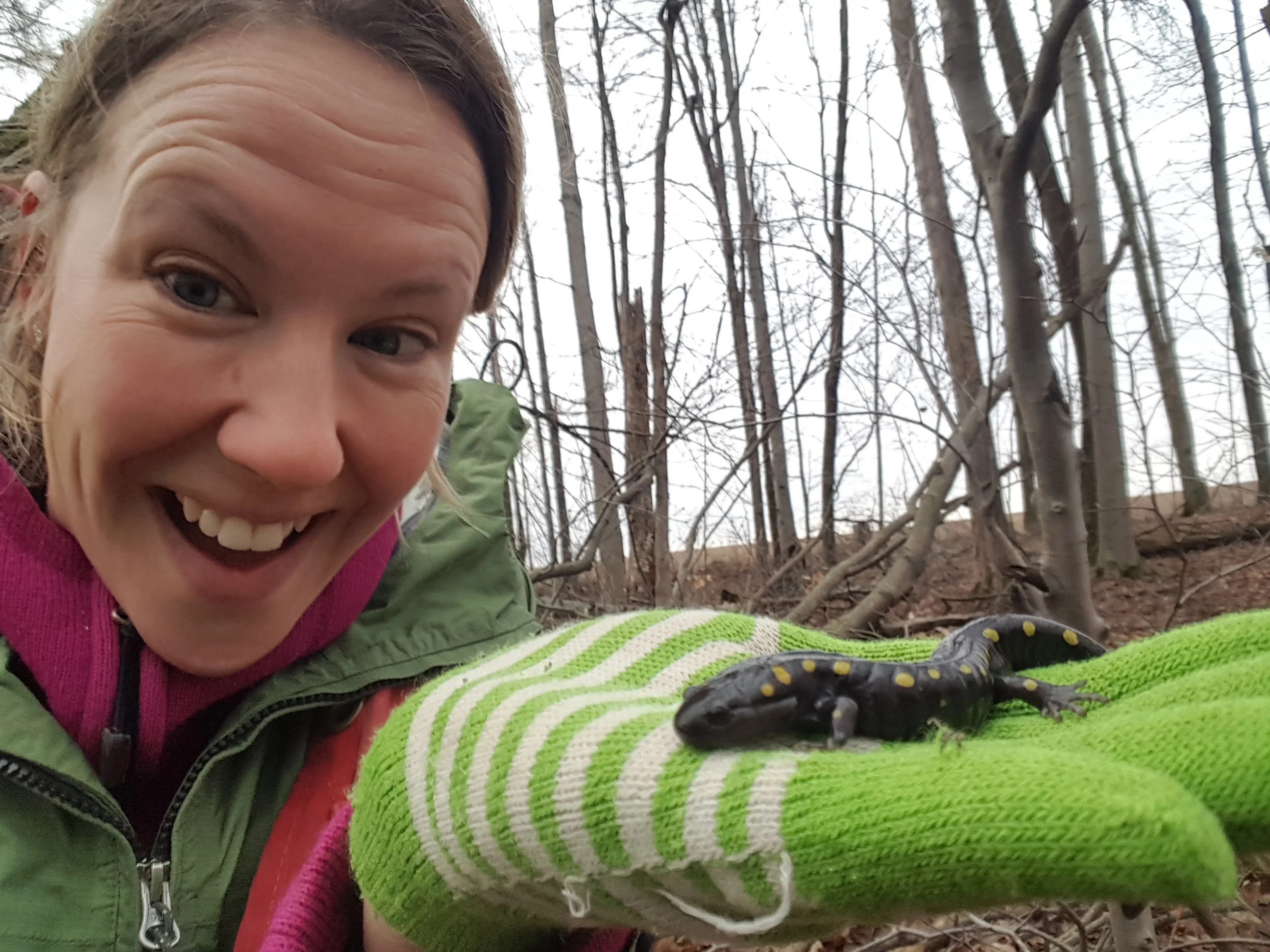
Spotted salamander. (Jessica Linton)
"Habitat loss, we know, has impacted them. But we don't know, exactly, what some of the nuances of those impacts are. And we don't know, for example, if overwintering habitat is a limiting factor," said Linton. "If we can start to understand some of the natural history, cues and importances of what they're doing, then that might aid in the recovery of the species."
WATCH: Four incredible ways animals survive the winter
Thumbnail courtesy of Heather Fotherby.
Follow Nathan Howes on Twitter.
